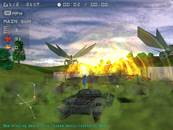![artoffailure_cover_180x264[1]](http://www.jesperjuul.net/ludologist/wp-content/uploads/2013/02/artoffailure_cover_180x2641.gif) My name is Jesper, and I am a sore loser.
My name is Jesper, and I am a sore loser.
And my new book The Art of Failure: An Essay on the Pain of Playing Video Games is fresh out on MIT Press!
(On Amazon.com. UK.)
To wit: I hate to fail in games. I think I enjoy playing video games, but why does this enjoyment contain at its core something that I most certainly do not enjoy?
We tend to talk of video games as being fun, but in The Art of Failure, I claim that this is almost entirely mistaken. When we play video games, we frown, grimace, and shout in frustration. So why do we play video games even though they often make us unhappy?
In the book I compare game failure to tragic literature, theater, and cinema. Where stories concern the inadequacies of others, game failure is special in that it concerns our personal inadequacies
The book covers the philosophy and psychology of failure, as well as the problem of interactive tragedy, and it shows how different types of game design makes failure personal.
Finally, I argue for our right to be just a little angry, and more than a little frustrated, when we fail.
Where to get it
Get The Art of Failure from your neighborhood bookstore, your favorite online retailer, or from the book’s companion website: http://www.jesperjuul.net/artoffailure/
The book is available in both paper and ebook formats.
Official MIT Press page: http://mitpress.mit.edu/books/art-failure
Thanks to everybody who made this book possible!
-Jesper
Endorsements
- “Frankly, I hadn’t expected to enjoy a book about failure nearly as much as I did. Jesper Juul brings many different fields of study to the table and provides an engaging learning experience.”
—Brenda Brathwaite Romero, game designer, COO and Co-Founder of Loot Drop
- “I can think of no other medium that so constantly forces its participant to contemplate their own demise. The act of playing games is one dotted with near-endless failure. Yet we plow on. Jesper Juul’s new book is exactly the sharp examination of failure I need to keep myself from stabbing my eyes out when I get frustrated.”
—Jamin Warren, Founder, Kill Screen
- “In The Art of Failure, Jesper Juul explores an interesting idea and asks provocative questions. This book will be of interest to developers, players, scholars, journalists, and readers with related interests, such as chess players or athletes.”
—Henry Lowood, Curator for History of Science & Technology Collections, Stanford University


 k from the 2016 DiGRA/FDG conference in Dundee, here is the paper I gave on using design patterns to understand video game history:
k from the 2016 DiGRA/FDG conference in Dundee, here is the paper I gave on using design patterns to understand video game history: 
![artoffailure_cover_180x264[1]](http://www.jesperjuul.net/ludologist/wp-content/uploads/2013/02/artoffailure_cover_180x2641.gif) My name is Jesper, and I am a sore loser.
My name is Jesper, and I am a sore loser.